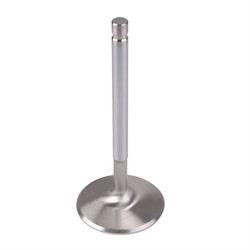Rebuilding Junkyard SBC Vortec Cylinder Heads
Vortec cylinder heads have been around for over 20 years and are still a great option for a performance small block build. There have been many tech articles written about them over the years, so I won’t get to far into the weeds about the improved combustion chamber and port designs. Just trust me, they are really good. With all the aftermarket cylinder head options available today many seem to have forgotten that you can pick up Vortec heads from the salvage yard for next to nothing. Sure, rebuilding factory cast iron heads is expensive and partially what made the Vortec head a popular choice in the first place. But these aren’t your grandpa’s camel hump heads and here is why!
There are two variations to look for; casting numbers 12558062 and 10239906. The “062” version has three triangles on the front to identify it. These are what you typically see on GM crate engines that we sell here at Speedway Motors. The other version “906” used one single hump on the front. They are identical other than the markings. My advice is to look for these at your local salvage yard. You can find them at swap meets, on craigslist and other places but you should be cautious of the condition. Vortec heads are prone to cracking. I prefer the junkyard because there is a good chance you can find a set that is in good shape.
Here are my qualifiers:
Find a pickup that is wrecked. There is a good chance it went to the boneyard because of the accident rather than because the engine was hurt.
Check the coolant and make sure it looks good. If you find a truck with a radiator full of stop leak the engine may have blown head gaskets or other damage, so walk away from that one.
Once you locate a set of heads without any cracks or other damage the rebuild/preparation process is very straight forward. These heads don’t seem to be as susceptible to the wear that their predecessors were. The valves and valve guides are usually in good usable condition. I attribute this to EFI and the lack of carbon that you might find in some heads that lived on a carbureted engine. One thing you must do to prepare a set of these for proper hot rod duty is to machine the valve guide bosses down to make room for additional valve lift. There are options to do this yourself, or you can enlist a local machine shop to take care of this for you. Vortec heads have a taller guide boss to give additional support to the valve stem, which means they only handle about .420” of lift.
Up next, you need to decide if you want to use the original valves or make some upgrades. On this particular set I wanted to put some bigger 2.02” and 1.60” valves in so I got a set of our Speedway Super Duty Valves. I also opted to get rid of the pressed in rocker arm studs and self-aligning style rocker arms, so I also asked my machinist to spot face the stud bosses and drill/tap them for me. I want to re-use my existing (non-self-aligning type) rocker arms from the set of camel hump heads that these will be replacing. We have the screw-in studs and guide plates here at Speedway that you will need if you choose to go this route as well.
Once you make the decision on what upgrades or repair work your heads need it’s time to think about what cam you are going to pair them with. This is because you need to use the appropriate valve springs, retainers and locks. I happen to be using a hydraulic roller cam that needs about 90 lbs. of seat pressure. A great budget-minded option that we offer is our blue “604” Beehive ™ valve springs from GM Performance parts. These are a common upgrade for circle track crate engines equipped with hydraulic roller cams.
Beehive ™ valve springs offer improved valve control and less weight over a traditional spring. They also work great on Vortec heads if you combine them with the right retainers and are a great option for most performance camshafts you might run in your hot rod. I used our Comp cams retainers and some Howards locks.
After assembling them with some new valve seals the last thing I did was measure the volume of the combustion chambers. This is the most accurate way to know exactly what your static compression ratio will be and may help you decide what thickness head gasket to run on your engine.
Overall, I selected a few additional upgrades that I didn’t absolutely need. For most applications you can simply freshen up a set of junkyard heads and have a great result for a small investment. There is no better way to wake up a small block with a set of Vortec heads and a performance camshaft!







